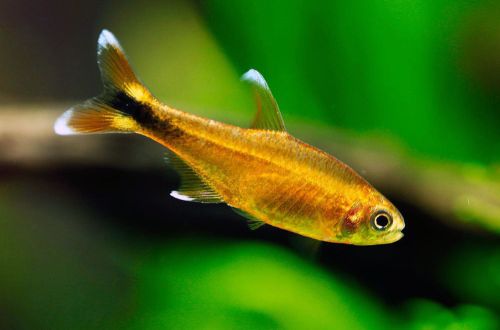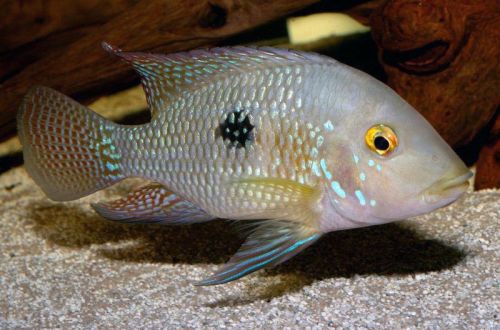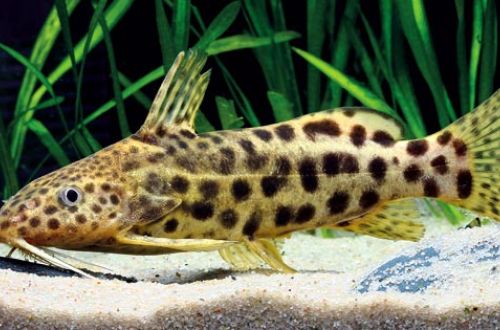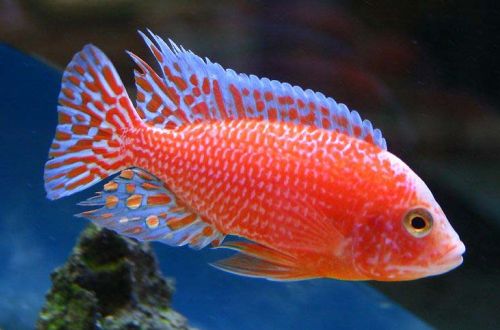
ハセマニア
The copper tetra or Hasemania, scientific name Hasemania nana, belongs to the Characidae family. It is considered one of the best Tetras for the general aquarium due to its bright coloration, excellent compatibility with other popular fish, hardiness and unpretentiousness.

生息地
It comes from the San Francisco River basin (port. Rio São Francisco) from the territory of Brazil. It occurs in small streams, rivers and channels of the main channel. The habitat experiences seasonal fluctuations in water levels, and the river itself flows through hilly, in places mountainous terrain.
簡単な情報:
- 水槽の容量 – 70 リットルから。
- 温度 - 23~28℃
- 値 pH — 6.0–8.0
- 水の硬度 – ソフトからハード (5-20 dGH)
- 基質の種類 - 任意
- 照明 – 落ち着いた
- 汽水 - いいえ
- 水の動き – 中程度
- 魚のサイズは最大5cmです。
- 食品 – あらゆる食品
- 気質 – 穏やか
- 8~10頭以上の群れで飼う
Description
Adults reach a length of about 5 cm. The color is silvery with a rich copper tint. Most of the caudal peduncle is dark, the tips of the tail and fins are white. Females are more modestly colored, the colors are not so saturated.
食品
Absolutely not pretentious appearance, the walls accept all types of popular food (dry, frozen, live). Their quality and composition largely affect the color of the fish, so strive to purchase food only from well-known and reputable manufacturers.
水槽の維持管理、手配
For a group of fish of 8-10 individuals, a tank of 70 liters or more will be required. Hasemania is not demanding in the design of the aquarium and adapts perfectly to various water conditions. The only recommendation is the presence of subdued lighting, because in bright light the color of the fish noticeably fades, becomes nondescript.
動作と互換性
A peaceful schooling fish, kept in a group of at least 8–10 individuals, with a smaller number become somewhat aggressive, although with their size it is unlikely that they will be able to cause problems to their neighbors. Compatible with many well-known aquarium species, including viviparous, zebrafish, rasboras, corydoras catfish, some gourami, South American cichlids and others.
繁殖・繁殖
一般的な水槽でも稚魚の出現は可能ですが、その数は非常に少なく、時間内に別の水槽に移植されないと毎日減少します。それはすべて成魚のせいであり、稚魚は食生活に加えるのに最適です。
In order to increase the chances of survival and somehow systematize the breeding process (spawning was not spontaneous), it is recommended to use a spawning aquarium, where sexually mature fish are placed during the mating season. Usually this is a small container with a volume of about 20 liters. The design is arbitrary, the main emphasis is on the substrate. In order to protect the eggs from being eaten (Tetra copper eats its own offspring), the bottom is covered with a fine-mesh net, or small-leaved plants or mosses (for example, Java moss). An alternative way is to place a layer of glass beads with a diameter of at least 1 cm. The lighting is subdued, a heater and a simple airlift filter are sufficient from the equipment.
発情期の始まりの刺激は、一般的な水槽の水質パラメータを次の値に徐々に変化させることです:温度約 6.0 ~ 6.5°C で pH 5 ~ 10、dH 28 ~ 30。 食事の基本は冷凍食品または生餌でなければなりません。
魚を注意深く観察すると、すぐにそのうちのいくつかが顕著に丸くなります。これらはキャビアで腫れたメスです。オスは鳴き声に似た音を出し始めます。これはこの種の特徴であり、選んだオスに注意を払っている兆候を示します。産卵タンクを準備し、コミュニティタンクからの水を入れます。メスをそこに置くと、翌日には最も印象的な大きなオスが数匹現れます。
It remains to wait until spawning occurs, its end can be determined by females, they will “lose weight” greatly, and eggs will be noticeable among the vegetation (under a fine mesh). The fish are returned. The fry will appear within 24-36 hours, after another couple of days they will begin to swim freely in search of food. Feed with specialized microfeed.
魚の病気
適切な条件を備えたバランスのとれた水族館の生物系は、病気の発生に対する最良の保証であるため、魚の行動の変化、色、異常な斑点、その他の症状が現れた場合は、まず水質パラメータを確認してから治療に進みます。





